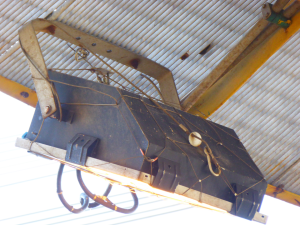Dropped Objects
What Does Dropped Objects Mean?
A dropped object is any object that has fallen to a lower level from a previously higher position. The two types of dropped objects are:
-
Static dropped objects, which refer to objects that fall from a static position under their own weight. These objects fall due to degradation or dislodgement from factors such as corrosion or vibration, or due to construction/structural failures.
-
Dynamic dropped objects, which refer to objects that fall due to the application of a force that is external to the system that the dropped object is a part of, such as an accidental collision.

Dropped objects may also be referred to as fallen or falling objects. Due to the potential fatal injuries that can result from being struck by a relatively light dropped object, this constitutes a significant occupational safety hazard and is a common source of injury and death. Although the term “dropped object” can refer to a falling object in any occupational context, it is specifically used with high frequency to refer to objects dropped within the context of the oil and gas industry.
Dropped objects are a major source of injury and death, constituting a top-three source of fatalities in many jurisdictions. In the UK, dropped tools are the second most common source of workplace fatality. The obligations that employers have to create a safe workplace include housekeeping and hazard assessment obligations to prevent objects from turning into dropped-object hazards. Many workplaces also use tethering programs that mandate that tools be secured by a tether to either workers or to a part of the workplace.
In 2018, the American National Standards Institute, in association with the International Safety Equipment Association, approved its first dropped-object standard, the American National Standard for Dropped Object Prevention Solutions (ANSI/ISEA 121-2018). As ANSI standards are often recognized by OSHA as best-practice standards, compliance with this standard may be viewed as evidence that an employer has taken the steps necessary to meet its general duty to provide employees with a safe workplace.
Within the oil and gas industry, an intra-industry initiative referred to as the “Dropped Objects Prevention Scheme” (DROPS) was developed as a means of responding to the major role of dropped objects in causing or exacerbating safety and operational incidents. The DROPS forms the basis of many dropped-object prevention programs used throughout the industry, such as Chevron’s. The Chevron program provides all employees with “stop work authority”—the ability to order a work stoppage without repercussions if they believe that an unsafe condition (such as a dropped-object hazard) is present.
Typical DROPS Management System
- Equipment Inventory Management
- Equipment Integrity (Reliable Securing)
- Maintenance (handover to Ops)
- Surveys and Inspections
- Safety Securing Devices
- Drops Zones
- Tools and Equipment at Height
- Lifting Operations
- Personnel Requirements
- Pre-Task Planning
- Incident Reporting
- Governance







